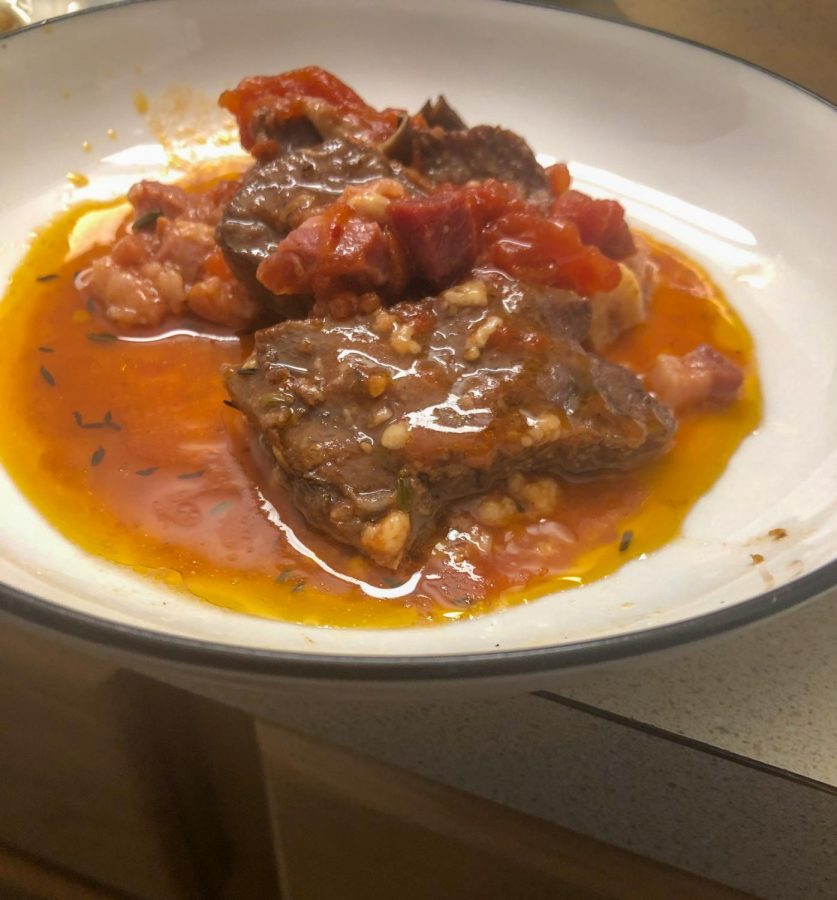Living on your own: Cooking as a rite of passage, and the case for eating bison
May 16, 2021
As we arrive at the end of a wholly unique semester, many college students are grappling with the concept of adulthood. Many feel as though they’ve lost time to the pandemic: lost time to grow, to learn, to figure out the world. But time still marches forward, and now students will have to face new challenges and decisions that they’ve never had to make before. Juniors and seniors might be living off-campus, on their own for the first time.
This also marks a major rite of passage for some students — learning to cook for themselves. Exciting for some, terrifying for others, this transition comes with some serious implications: cooking for yourself opens the door for many ethical questions. While climate change and injustice plague our world, we all need to strive to do our best and to understand the consequences of our choices.
This leads us to a simple question: what food should we avoid consuming? One of the biggest factors to environmental degradation and the emission of the greenhouse gas methane is cattle ranching. Cutting down rainforests to create grazing grounds has severely impacted carbon sequestration, and cattle herds have damaged a large portion of the soil in the America West. Although beef has become an icon of American identity, cows are not native to the continent and were introduced by settler colonialists. This places them at odds with the rest of the ecosystem as they try and fill an ecological niche that doesn’t belong to them. Where cattle now graze, another species once occupied in droves- bison. Once synonymous with the North American Great Plains, the animal was driven to the brink of extinction by the US government during a push to develop a railroad system across the nation. Some have also argued that this ploy was also an attempt to decimate Indigenous communities by exterminating one of the primary food sources for tribes in the Midwest.
Now many are calling for a revival of the bison. Although not as endangered as they once were, the bison population is still smaller than it once was. Proponents of eating bison talk about the high protein content and leaner meat, as well as the environmental benefits of replacing invasive cattle species with bison that promote growth and contribute to a healthier ecosystem. Eating bison, however, comes with its own ethical issues. For example, Increased demand for bison meat has led to illegal smuggling of wild bison from Yellowstone National Park. So be sure to ask about the source of any bison meat you intend to purchase, and always listen to Indigenous voices about whether bison consumption is beneficial for your area.
What is a rite of passage? How can we take on the challenges that face the world today? These questions may seem overwhelming, so why not take them one step at a time? Perhaps bison could be a good place for you to start.

Recipe:
(4) Bison short-ribs
(1/2lb) Pancetta
(5) Cloves of garlic
Sprig of fresh thyme
Large can of San Marzano tomatos
(½ cup) Olive oil
Pan-sear the short ribs in some olive oil until golden brown with a light crust. Lightly fry pancetta in the same pan, and add both into a large pot. Add remaining olive oil and heat on low with fresh thyme and garlic for a minute, before adding the canned tomato. Cook for several hours, until the meat on the short ribs can be easily sliced through.





